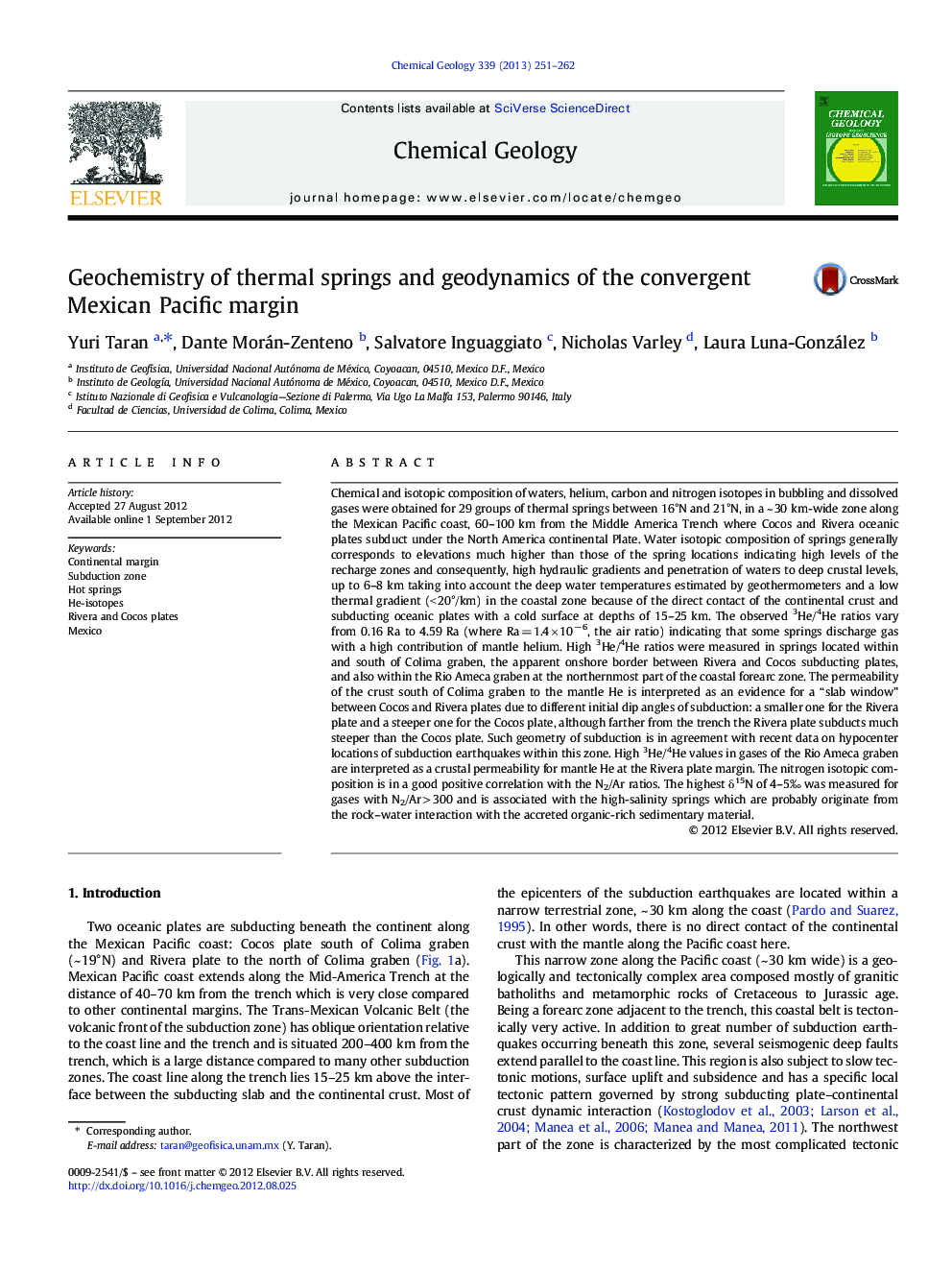| کد مقاله | کد نشریه | سال انتشار | مقاله انگلیسی | نسخه تمام متن |
|---|---|---|---|---|
| 4699143 | 1637629 | 2013 | 12 صفحه PDF | دانلود رایگان |
Chemical and isotopic composition of waters, helium, carbon and nitrogen isotopes in bubbling and dissolved gases were obtained for 29 groups of thermal springs between 16°N and 21°N, in a ~ 30 km-wide zone along the Mexican Pacific coast, 60–100 km from the Middle America Trench where Cocos and Rivera oceanic plates subduct under the North America continental Plate. Water isotopic composition of springs generally corresponds to elevations much higher than those of the spring locations indicating high levels of the recharge zones and consequently, high hydraulic gradients and penetration of waters to deep crustal levels, up to 6–8 km taking into account the deep water temperatures estimated by geothermometers and a low thermal gradient (< 20°/km) in the coastal zone because of the direct contact of the continental crust and subducting oceanic plates with a cold surface at depths of 15–25 km. The observed 3He/4He ratios vary from 0.16 Ra to 4.59 Ra (where Ra = 1.4 × 10− 6, the air ratio) indicating that some springs discharge gas with a high contribution of mantle helium. High 3He/4He ratios were measured in springs located within and south of Colima graben, the apparent onshore border between Rivera and Cocos subducting plates, and also within the Rio Ameca graben at the northernmost part of the coastal forearc zone. The permeability of the crust south of Colima graben to the mantle He is interpreted as an evidence for a “slab window” between Cocos and Rivera plates due to different initial dip angles of subduction: a smaller one for the Rivera plate and a steeper one for the Cocos plate, although farther from the trench the Rivera plate subducts much steeper than the Cocos plate. Such geometry of subduction is in agreement with recent data on hypocenter locations of subduction earthquakes within this zone. High 3He/4He values in gases of the Rio Ameca graben are interpreted as a crustal permeability for mantle He at the Rivera plate margin. The nitrogen isotopic composition is in a good positive correlation with the N2/Ar ratios. The highest δ15N of 4–5‰ was measured for gases with N2/Ar > 300 and is associated with the high-salinity springs which are probably originate from the rock–water interaction with the accreted organic-rich sedimentary material.
► Deep groundwater circulation at the Mexican Pacific coast between 16°N and 21°N
► He-isotopes suggests different initial dip angles for Rivera and Cocos plates and a slab window close to the trench.
► He isotopes suggest the NW limit of the Jalisco Block along the Rio Ameca graben.
► Nitrogen isotopes mark possible accretion complexes.
Journal: Chemical Geology - Volume 339, 15 February 2013, Pages 251–262
